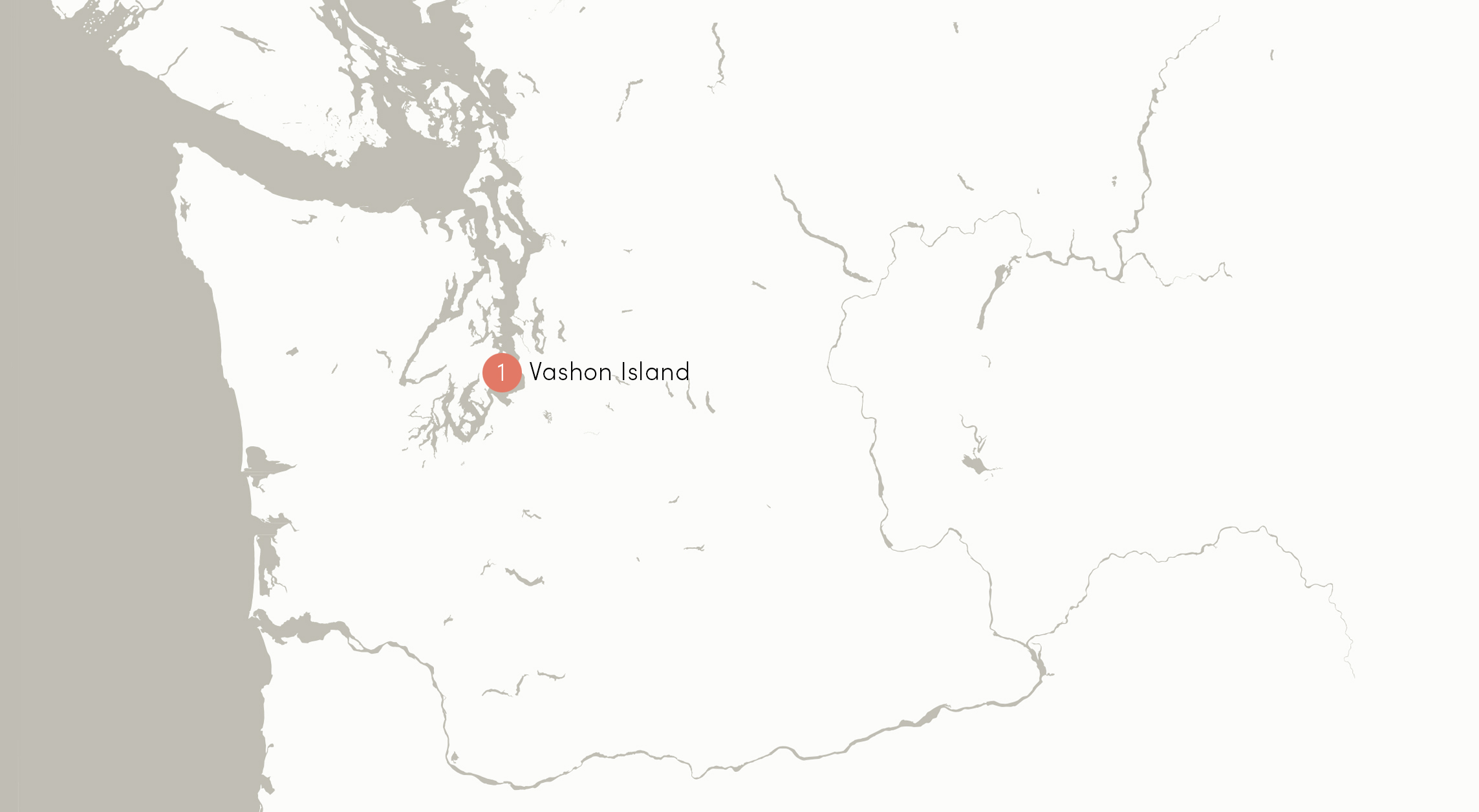Vashon Island
Though agriculture on Vashon Island begins several thousand years ago with the S’Homamish people, Japanese American farming on Vashon begins with migrant workers around 1900 when the first Japanese appear on the Island census.
Japanese American immigrants arrived to the Pacific Northwest in the 1890s, usually by steamship. They were driven out of Japan by a rapidly industrializing Meiji-era government and a high tax on the price of rice, but also drawn to the United States by the promise of labor on Hawai’ian sugar cane plantations and then the promise of mainland jobs in lumber mills, railroads, agriculture, or mining.
Community Growth and Development
Despite anti-Japanese discrimination laws and racially restrictive housing covenants passed at the federal and state levels, particularly during the 1920s, Japanese Americans built thriving communities in urban and rural areas of the state. A number of newspapers were published around the state in Japanese and English. “Nihonmachis” (Japantowns) sprung up in cities like Seattle and Tacoma, where the Japanese owned restaurants, import stores, produce stands, hotels, barber shops, and laundries. In rural areas like Bainbridge Island, Bellevue, Vashon Island, Yakima, and the White River Valley, Japanese Americans painstakingly cleared and cultivated hundreds of acres of land, making it suitable for farming. By the 1930s, it is widely estimated that close to 75 percent of the produce in the state was grown by Japanese Americans. Japanese Americans also worked to balance their cultural roots with their new surroundings as well as participating in their wider communities. They organized unions, fundraised for community institutions like Japanese language schools, and secured legal representation to fight discrimination in Olympia.
Wartime and Imprisonment
During World War II, Japan’s attack on Pearl Harbor brought shock and upheaval to Washington’s Japanese American communities. In February 1942 President Roosevelt signed Executive Order 9066, authorizing the mass incarceration of close to 110,000 Japanese Americans on the West Coast. A series of FBI raids removed many Issei (first-generation) community leaders, leaving the young American-born Nisei (second-generation) to take charge. Given just a few weeks and sometimes days, Japanese American families had to store or dispose of their belongings, homes, and businesses. Japanese Americans on Bainbridge Island were the first in the nation to be forcibly removed to a concentration camp, Manzanar (California). The community was then scattered to several different ‘“assembly centers” “Camp Harmony” in Puyallup, the livestock center in Portland, Oregon, and Pinedale, California. After these temporary living quarters, they were imprisoned in concentration camps, most going to Tule Lake, California; Heart Mountain, Wyoming; and Minidoka, Idaho. Because Spokane was outside the military exclusion zone, the population of its existing “Japanese Alley” swelled from its existing population of 1,000 to nearly three times that size as Japanese Americans sought refuge outside Seattle. After the end of the war, the government’s “resettlement” program discouraged many Japanese from returning to the West Coast, instead encouraging them to remain in the Midwest and East Coast.
Postwar and Contemporary Life
Given the extreme dispersal of the Japanese American community during the war, many struggled to rebuild their lives and communities after their return. Many did not speak of their wartime experiences. The redress and reparations movement of the 1970s, founded in the Seattle area, brought forth a wealth of testimonials and sparked a reinvestigation and reassessment of painful histories. Today, Japanese American communities are much smaller; some continue to organize politically as well as honor their cultural ancestries. In the late 20th and early 21stst century, more recent waves of Japanese technology workers and immigrants—particularly to parts of Seattle and the Eastside—have infused new energies into cultural and political organizations.
This project is made possible though the generous support of:

